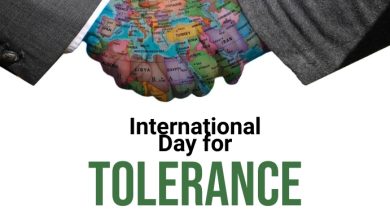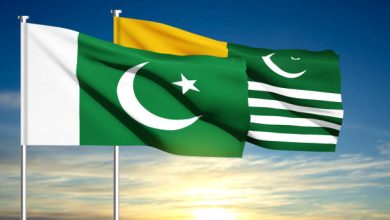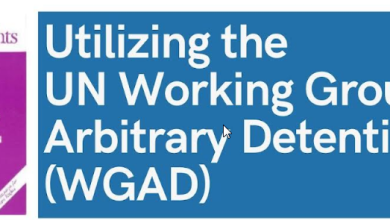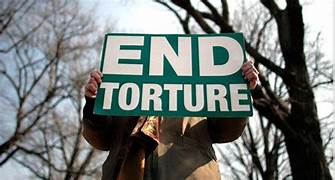Article: Anyay Patr: A White Paper on the oppression faced by Muslims in India
By Aariz Imam
 Religion has public value as a regulator which channelizes public energy for the common good. Religious values irrespective of faith are public in their very nature. All religions are born out of common value systems. To say that religion is a personal matter is a very narrow interpretation of theology. This calls for a need for a clear division of religion’s scope between personal and public. This leads to two initial arguments. Religion has both public and private roles which goes against the popular secular definition of religion as being personal. And secondly, there should be no conflict and interference between religion’s public and personal roles and neither should there be any over reach of the personal over public or vice versa both within the religion and between them. In its very construct, the public religion flows from the personal and given the ingrained public value it serves public good. This approach negates the secular approach which tries to homogenize religion in the name of reconciling its diverse public values, where the need was to develop the polity to live with it and trust the public value brought by the participant religion to serve the common good.
Religion has public value as a regulator which channelizes public energy for the common good. Religious values irrespective of faith are public in their very nature. All religions are born out of common value systems. To say that religion is a personal matter is a very narrow interpretation of theology. This calls for a need for a clear division of religion’s scope between personal and public. This leads to two initial arguments. Religion has both public and private roles which goes against the popular secular definition of religion as being personal. And secondly, there should be no conflict and interference between religion’s public and personal roles and neither should there be any over reach of the personal over public or vice versa both within the religion and between them. In its very construct, the public religion flows from the personal and given the ingrained public value it serves public good. This approach negates the secular approach which tries to homogenize religion in the name of reconciling its diverse public values, where the need was to develop the polity to live with it and trust the public value brought by the participant religion to serve the common good.
The Failure of Secularism in Recognizing Religious Differences
Since forever in India the predominant nationalist secular approach has been to brush away the religious differences as some kind of abnormality without even recognizing them as a value stream. This despite the constitution says otherwise. The Article 25 of the Indian Constitution provides for the freedom to profess, practice and propagate religion subject to public order, morality and health. While the constitution provided for living with the differences, it assumed that people would identify them in the first place. However, the popular imagination took a totally different view of this constitutional intention. In the mad rush to adopt western ideals of secularism the country in nationalist frenzy skipped the step of identifying the differences and jumped to the reconciliation to bring to life Article 25. This approach adopted by the forefathers of Indian democracy reveals that they not just failed to identify the differences and the source of their origin but even when they did, they shied away. Politicians feared that the reconciliation necessary to perpetuate the rule after the transfer of power may not be possible if the differences were brought forth on the table of discussion where given the circumstances new political forces will spring up challenging their supremacy. Politicians swept this problem under the carpet by adopting nationalism and secularism as the new fancy clothes. And since this fear was never addressed the Indian body polity ultimately failed to get training on identifying the differences and a peaceful coexistence.
This political bypass may have sustained the polity for so long but at what cost?
Genealogy of hate
The lack of awareness and sensitization around the prevalent historical and structural differences between the Abrahamic and Oriental faith and the training to live with it in the society kept the seeds of suspicion alive which created a fertile ground for future maneuvering. Secularism has resulted in Indians knowing more of secular practices than the religious practices of the other faith leading to myths about each other. Despite claiming to have a syncretic culture & a composite heritage, the majority in the majority community are not aware of fundamental tenets of Islam, the belief in Monotheism, Aniconism and Prohibition of Idolatry. It is quite common to come across regions in India where a halal is assumed as some sort of a chicken serving that goes with tomato sauce. Namaz is seen as some kind of an uthak baithak. People asking about the number of days and the hours of fasting in the month of Ramadan suddenly makes you feel like a foreign particle, while the comments on polygamy, purdah and divorce makes you fill with rage. While these may still be considered as harmless manifestations arising out of ignorance, the secular approach has not been one. The seculars did not make any attempt to educate the masses, and tried to cover up this ignorance with less informed but glamorized secular practices. Where informed differences existed and turned harmful, there were even lesser interventions made to understand and correct the root cause of the revulsion and a bigger façade of secular practice was put forward to capture public imagination.
Nothing describes it more succinctly than the random snippets accusing Masjids & Eidgahs of illegal construction, demolition of madrasas, mosques & other religious structure & attack on namazis, are interspersed with the news of Iftar parties, Eid Milan hosted by political parties, competing advertorials carrying Ramazan & Eid wishes & TV commercials that celebrate the delicacies of Eid. Do they even know Eid ki sewaiyan just does not taste as sweet when you have no place to offer the namaz or worse when you are shot inside the Eidgah or lynched while returning from Eid shopping. When the situation calls for an outcry, secularism condoles you with mushaira, as if cultural appropriation is a lesser blow. Despite having coexisted for centuries a newspaper has to carry a piece on what is the difference between Eid ul Fitr & Eid ul Adha. A vast majority still does not know that Muslims follow the lunar calendar or that the Eid date cannot be predetermined and is only confirmed after the moon is sighted. A skull cap becomes a sign of solidarity, a scarf a sign of backwardness & if it is desirable the reverse can be true & so can be all other combinations so long as the intention is not to acknowledge the identity but at worst stereotype or at best whitewash the differences. All markers of Muslim identity are popularized to serve the larger liberal agenda or target audience as the case may be.
The influence of this façade of secularism perpetuated by the dominant intellectual class over the past hundred years is such that today even when all dissent has been silenced, anyone with a dissenting voice takes refuge in that same space for despite being under siege, the liberal intellectual fort still holds ground. This manifests itself in a more lucid way when Umar Khalid a self-proclaimed atheist finds support in the alternate media but Sharjeel Imam does not, despite both facing the brunt of the state because of their religious identity or the perceived one in case of Khalid.
The jugalbandi of Secularism & Communalism
Exploring further the genealogy of hate one finds whatever maybe the dominant factor behind its origin, ignorance or a natural revulsion or an inferiority complex, there is ample evidence to indicate what kind of political forces have played the bigger role in its propagation & indeed contrary to popular opinion it has been the seculars. This leads to the reason why hate politics was never acknowledged in the first place for admitting hate as an integral part of Indian polity would reveal their failures & any serious discussion would eventually lead the blood trail at the doorsteps of the seculars. Hence, for the seculars hate politics is at best a diversionary tactic from the more real-world livelihood concerns & at worst just an irritant. It suits Congress and other liberal parties to say that the hate politics is just a diversionary tactic but it’s disturbing when Muslims also blindly follow their stand. They have their house demolished, shops vandalized, people lynched yet come back saying it’s a diversionary tactic instead of questioning the root cause of hate politics. Compare this with Dalits and OBCs who talk about their oppression with utmost clarity. This, when the first step which is the recognition of Dalit & OBC marginalization has been long acknowledged in the discourse, and corrective actions have been taken. The present-day caste struggle is not for recognition of their marginalization but for enforcing the legal safeguards and furthering its ambit.
The conflicting claims in Indian politics backed by facts and perception present a complicated picture. As discussed earlier, to put it mildly, Hindus have forever been skeptical if not hostile about Muslims, the records of which are available everywhere from medieval archives to existing laws and on the other end are claims of Hindus being magnanimous. Even when the right wing might face some resistance from the liberals, both unite in this magnanimity push.
Caste oppression has forever been a harsh reality yet fails to stop its consolidation under the right wing upper caste umbrella to serve religious ideology time and time again. In fact, the caste oppressed have been at the forefront of aggression against Muslims and act as foot soldiers of the upper caste. Well pass this and you realize that even when they consolidate for a common cause they tend to splinter for partisan caste interests till BJP brings back Nationalism and Communalism to the bargain herding them back towards the common cause. And even when this serves the common cause, the right wing can still not be sure if it would lead to similar electoral gains which necessitates scouting for any and every possible party or person who could bridge the gap between the caste rich and the poor castes.
Looking further one realizes brute and absolute power consolidated in the establishment, a popular and rising support of the majoritarian masses yet there seems to be no urgency to realize the grand wishes like the wholesome change in the constitution, retrospective legislations on matters of faith, citizenship, occupation etc., which are not being brought about at once making the liberals believe that the government actually is not invincible. This contradiction which is called realpolitik but is far removed from real capabilities of the government is visible across the policy spectrum, secular non-secular alike. Even more interesting is that it’s not the BJP but the liberal opponents and independent critics who call it realpolitik. BJP as a matter of fact projects it as it’s magnanimity when it involves backstepping on legislations or adopting calibrated approach on controversial legislations.
Notwithstanding the episodic realpolitik of the right wing, the jugalbandi of secularism & communalism has forever been on the rise with the net effect of furthering the marginalization of Muslims.
Nyay Patra: Shortcomings in Congress Manifesto
It is in this context it is important to examine the Congress manifesto ‘Nyay Patra’ for the 2024 General elections which is being seen as a revolutionary piece of document by political commentators. Nyay Patra on the face of it is indeed a dossier of compulsory actions for any government if the change of power takes place, yet if you are a Muslim minority and with Chidambaram sharing the dais at the event, you must be very cautious for the legal reforms and reverses proposed in the manifesto. Chidambaram is the man behind some of the most draconian laws and executive orders of the past. One is reminded that the document promising legal recourse to corrective action was released on the last Friday of Ramadan. 16 years ago 19th September 2008 was also the last Friday of Ramadan when the Batla House encounter took place on which the demand for judicial enquiry was repeatedly turned down by Chidambaram when he became the Home Minister.
Rahul Gandhi during his Bharat Jodo Yatra gave the slogan of communal harmony – Nafrat ke bazar me mohabbat ki dukaan. The Yatra was the biggest mass contact program against communalism in independent India. He followed it up with a walk focused on social & economic Justice – the Nyay Yatra, which eventually ended with the drafting of the Congress manifesto, the Nyay Patra.
Besides the cursory questions arising from the presser, the essential enquiry is to find out how this much talked about manifesto has addressed the fundamental problem of secularism, the conceptual & later structural abnormalities of which were at the center of debate that ended up in two separate nations at the time of independence & were forewarned would manifest in future the way it has today. The document offers one of the most recent empirical evidence to understand what India’s one of the leading principal opposition parties which also reigned the country for around six decades considers as the biggest threat to the country. We have seen how right at the birth of the Indian nation state it was the Indian National Congress’s fascination with secularism under the influence of the west that led to the adoption of the inherently problematic version of nation-state & liberal democracy about which the public intellectual & historian Mahmood Mamdani puts it is a setup where majority is not the result of a democratic deliberation, because majority precedes democracy. An understanding of whose nation state it is, is not a result of a democratic discussion. Pointing out that this is how democracy is defined Mamdani locates this as a general problem in democracies the world over, which has effectively rendered democracy meaningless. He further highlights the problematic relationship of the nation state with its minorities where tolerance for minorities is just a techno-legal arrangement and not rooted in empathy.
Today when democracy khatre me hai has become a common talk among the opposition and dissenting voices, they should be questioned if it is so because they have been at the receiving end or if the architecture of the democratic setup itself is flawed. If a majority is predetermined long before a bill is tabled in the house what value does a democratic debate hold? What hope is left for the minority to see through any favorable legislation? Does it mean that the constitutional safeguards for minorities are and shall always be at the mercy of the majority?
It is important to question whether the Nyay Patra correctly identifies the heart of the problem or is focused on just its visible outcomes? Does it locate the problem in the rise of the BJP or it goes back to locating the problem in the very idea of nation state & its consequent features namely democracy, secularism, etc. or as usual brushes it aside as a diversionary tactic?
Probing further one must establish the parameters on which the manifesto has to be tested which necessitates documentation of the current state of oppression – besides the one that has structural underpinnings as discussed above – hence the need for Anyay Patra, a white paper on the state of Muslims in India.
Nobody is talking about the terror of terror investigation agencies and anti-terror laws but everybody is well informed and concerned about the sections of PMLA which pose a challenge in seeking bail for political prisoners, the low conviction rate, delay in trial, et al. Even when terror agencies and anti-terror laws like UAPA are brought into debate by journos like Ravish Kumar it is in context of so-called liberals who have suffered because of it and not for its biggest victims. The victims of ED, IT, CBI are considered political prisoners whereas the victims of agencies like NIA, ATS & the draconian laws like UAPA are labelled terrorists.
The normalization of Muslim oppression has reached to such an extent that a Muslim MP is threatened and abused inside parliament on camera, a former Muslim MP is killed on camera while in judicial custody, a former Muslim MP is allegedly killed by jail authorities by deliberately restricting timely medical aid when he was infected with COVID, a former Muslim MP is allegedly poisoned to death by jail authorities while another former Muslim MP has stated about similar threat to his life in jail.
The whole new crop of upcoming Muslim student leadership that came to fore during the CAA protests has been put behind bars without anyone talking about the misuse of law and agencies in their case. The targeting of Muslim political leaders, Muslim political parties and Muslim NGOs has shrunk the public space for the Muslim activism and rights-based struggle and whatever symbolic remains is completely at the mercy, whims and fancies of the state.
From targeted demolition and desecration of Muslim places of worship, in the name of bulldozer raj the state terror has expanded to cover Muslim educational institutions, Muslim shops and Muslim houses.
All this while denigrating and demonizing of Muslim customs, symbols and religious practices has continued unabated and in fact expanded to cover every aspect of Muslim religious identity, from talaq, burqa, halal, azan, namaz, jamaat, daadhi, topi, jihad, qurbani and of course kurta pajama, shalwar qameez and what not.
Newer versions of jihad are being curated by the day and ascribed to any random issue to legitimize and enable accelerated offensive on Muslims.
From normalization of rising lynching incidents on an ever-expansive pretext, using of Muslim as human shield, public flogging of Muslim men, public auctioneering of Muslim women, to public shooting by politically inspired security personnel in train, dharm sansad calling for genocide & media invoking the Nazi slogan of Final solution to exterminate Muslims the project is moving at a fast pace and has opened up plenty of work fronts.
The normalization of erasure of Muslims from the cultural space and establishing them as villains is evident from the criminal revision of history done to mute Muslim contribution in the past, using state power to capture, cripple and totally alter the nature and character of eminent Muslim educational institutions, renaming of cities, and adopting Hindutvaization as a principle in public policy from naming convention, to program design and implementation.
From expanding the territorial reach of local Hindu festivals and converting them to aggressive yatras, jhankis and juloos, online mobilization and logistical arrangement of arms and ammunition and organized militia training to the participants, the brigade is taking solid leaps.
From the political boycott of Muslim parliamentarians, threatening, abusing and raising communal slogans against them in the house, to the economic boycott, loot and arson of roadside Muslim vendors, the oppression has all elements of uniformity and continuity.
An appraisal of the current situation as evident from a wide range of outcomes discussed above conjoined with the structural problems with the Indian democracy, present a complete picture of the oppression Muslims have to suffer. It is only with this knowledge of hindsight and on these parameters a proper assessment of the Nyay Patra can be done. Unfortunately, the manifesto which talks about wholesome legal and policy resets fails to satisfactorily address not even one of the specifics discussed above. Worse, it does not even acknowledge the root cause of hate politics – the very idea of secularism based on homogenizing the difference, without training the people to live with it – which in turn leaves the breeding ground of hate unattended, which brings us to the question of legal safeguards for Muslims which needless to say find no mention.
What is the way out?
Acknowledging Structural Oppression
Having delved into the problems it makes one curious as to what exactly is the way out. First of all there is no shortcut. There is a process to every change & it begins with acknowledging the problem that yes Muslim oppression is structural, historic, deliberate, intended, less done on purpose than it is organic, largely demand driven and it is certainly not some diversionary tactic, aberration or irritant.
It is the acknowledgment of the ground reality only that can open the forum for discussing specific deliverables from the government, and not some ad-hoc or interim promises in a Nyay Patra. Pending the deradicalization of the majority community which must be initiated in parallel, the constitutional & legal safeguards should kick off with immediate effect.
Constitutional Reforms
It must begin with the removal of Hindu bias from the constitution evident in Article 1, 6, 25, (a)(b), 48, 341, 343, 351 & in 8 the Schedule, through a constitution amendment bill followed by providing proportionate representation through an amendment to the constitution and giving it the precedence as basic structure.
To achieve this first of all a nationwide socio-economic caste census needs to be conducted to generate credible data. Thereafter, an independent constitutional body Equal Opportunities Commission to be constituted as per the recommendations of the Sachar committee report, as a nodal body for analyzing SECC data, making recommendations & ensuring enforcement.
Denotification of existing reserved seats to be done followed by Delimitation of seats which should be carried out in a way that preserves cultural identities of all ethnic, linguistic, and caste and sub caste groups. Next, the new paradigm of affirmative action requires discarding the outdated term ‘reservation’ for a more progressive terminology such as ‘aspiration’.
A dynamic assignment method to be adopted for redistribution of aspirational seats in proportion to the population of castes before each parliamentary and assembly election across the country, thereby enabling inter-state transfer of aspirational seats and removing the bogey of vote bank politics.
Once the architecture has been revamped Muslims must be guaranteed representation from parliament to gram panchayats, education to services, paramilitary, armed forces to police, judiciary and every other outlet where reservations are in place or in the private sector were to be implemented there.
Legal Reforms
Abolition of draconian laws like UAPA, NSA, GUJCOCA, MCOCA, AFSPA & PSA is a key legal reform given the misuse & should accompany Legislation on the lines of SC ST atrocities act criminalizing derogatory remarks and other verbal or physical acts of harassment. Law to be enacted to ensure time bound and speedy trial in atrocities cases where Muslims are a victim and in terror cases where they have been held accused, besides providing for liability to be borne by state officers were Muslims to be implicated in false cases and allowing adequate and fair compensation in case innocence of Muslims is proved. An independent constitutional body Reparation Commission to be constituted to deal with matters of Resettlement, Rehabilitation and Compensation commensurate for a dignified life to be provided for where claims are pending in riot, terror or atrocities cases.
State protection and patronage to be extended to village and small-scale industries employing skilled and unskilled Muslim artisans. Financial empowerment and devolution of additional powers to be carried out to strengthen the third tier of democracy i.e. gram panchayats and municipal corporations ensuring geographical uniformity in distribution of funds within an administrative area.
No retrospective classification of nationality to be allowed and any such process underway to be declared null and void with immediate effect. Every judicial bench with more than one judge to be configured in a way so as to represent the diversity of the country & last but not the least adopting a resolution in parliament acknowledging & condoning all state sponsored atrocities and setting up a separate court to deliver speedy justice in all cases of state violence in a time bound manner.
Having gone through the safeguards, one must not get overwhelmed but remember the process which needs to be initiated nonetheless. While we are free to dissect the problem & prepare the list of must wins which can be put across the table as part of political bargain, it is important that a community level awareness is carried out to bust the myths & myopia around Muslin political aspirations by bringing home the message that calling for Muslim politics doesn’t amount to calling for Islamic state, nor should it be confused with a call for reforms. Muslim politics is all about securing a future with equal citizenship rights in perpetuity.








